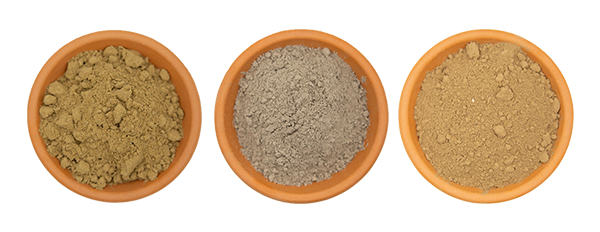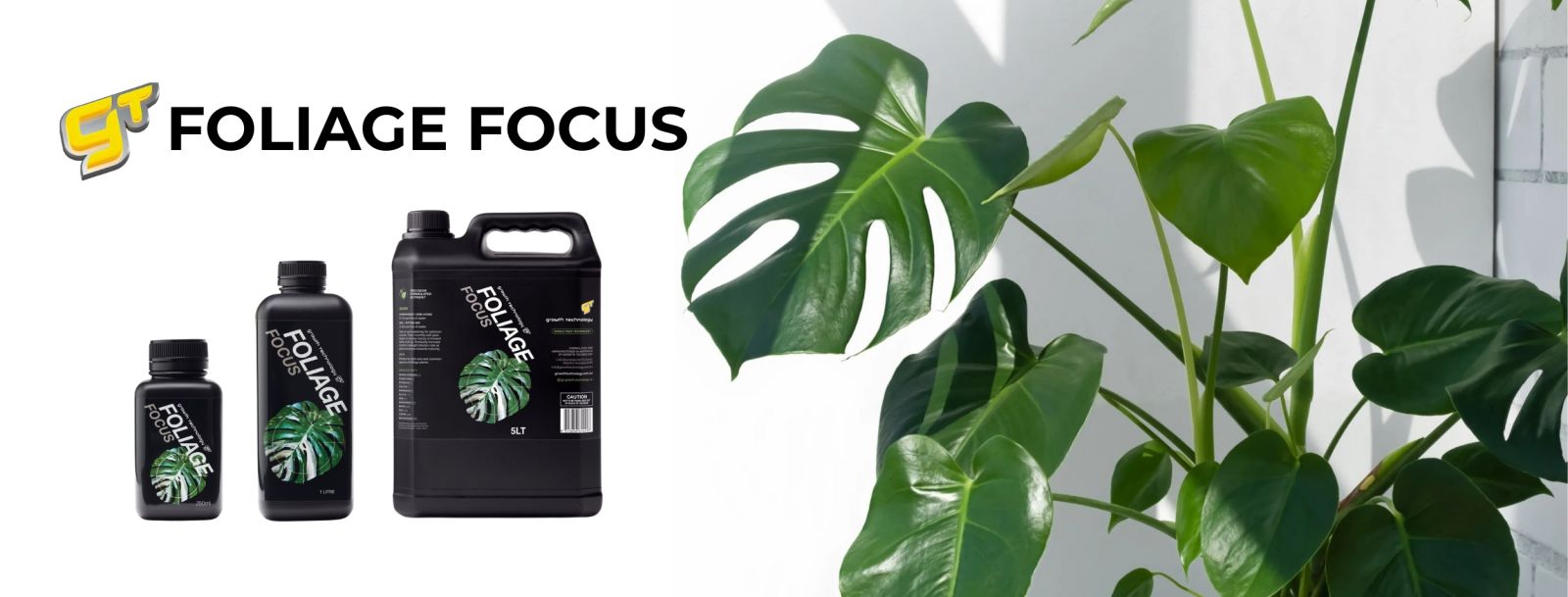Is Growth Technology Foliage Focus Right for Your Indoor Jungle?
By Hydro Experts | 16 April 2025
As the obsession with indoor plants remains strong from one side of Australia to the other, more of us are searching for the holy grail, the ideal method to help keep our leaf-lovers happy and healthy. If you have been reading through plant-obsessed social media groups or collaborating with your local nursery, no doubt you have come across the phrase: "Growth Technology Foliage Focus." But is this liquid nutrient formulated in Australia worth your time when it comes to your forever convoluted plant care strategy? Let's explore what makes this product tick, how it is different (and better) than other Australian products, and whether your indoor plants will thank you for this investment.
What Exactly is Growth Technology Foliage Focus?
Growth Technology is a business that has earned a name for itself in Australia. Their Foliage Focus liquid nutrient is designed for – you guessed it – foliage plants that take up space in most indoor plant collections.
At the heart, Foliage Focus is a complete and balanced liquid nutrient that encourages leafy, green growth instead of flowering. This makes it especially appropriate for houseplants, which we grow mainly for their amazing foliage and not for flowers. If you grow monstera, pothos, philodendrons, calatheas, or other leaf plants, that figure of speech speaks your language.
The formula boasts an NPK ratio of 2.2-0.9-2.6, which translates to:
- Nitrogen (N): 2.2% - Promotes leaf development and that rich green colour we all love
- Phosphorus (P): 0.9% - Supports root development without pushing flowering
- Potassium (K): 2.6% - Enhances overall plant health and disease resistance
Unlike many supermarket plant foods, Foliage Focus is based on a hydroponic nutrient formula and contains not just the basics, but a full spectrum of nutrients. In addition to primary macronutrients, it delivers essential elements like calcium, magnesium, and sulphur, as well as trace elements including iron, manganese, boron, copper, zinc, and molybdenum.
These micronutrients play a key role in plant metabolism, often making the difference between a plant that merely survives and one that truly thrives.
The Australian Context: Why Does It Matter?
In Australia, we have specific challenges due to our unique growing conditions. Even indoors, our bright natural light through the window can be quite intense. Our tap water may vary dramatically in mineral content from one region to another. The local climate, with seasonal temperature changes, may have a more extreme variation than found in most international plant care books.
For many Australian indoor plant lovers, especially those who live in hard-to-moderately hard water regions such as anything west of Melbourne, Adelaide, and Perth, knowing that Foliage Focus contains trace elements can be extremely beneficial. Many of us rely on municipal tap water that does not include even the most basic micronutrients as compared to rainwater or municipal tap water that outdoor gardens rely on.
The Science Behind Foliage Focus: What Makes It Work?
The success of any plant nutrient comes down to its formulation and how well it addresses plant needs. Foliage Focus approaches this with a sound scientific basis.
Most houseplants tend to follow distinct growth phases, and their growth occurs most actively during spring and summer. During these times, plants require easily accessible nutrients to support new leaf growth and elongation of the stem. Foliage Focus provides these most immediately available nutrients in a liquid form, unlike slow-release granules that may release the nutrients when the plants do not need them as much.
The elevated nitrogen and potassium ratio promotes vegetative growth and encourages edge-of-field plant health. The phosphorus content is slightly limited on purpose: excess phosphorus can promote early or excessive flowering, resulting in plant stress when we are ultimately growing for foliage.
Another technical benefit of Foliage Focus is that it is pH-balanced. This helps to support the correct environment in the growing medium for nutrient uptake. This is especially important in Australian potting mixes, which can be more alkaline (including in hard water portions).
Application: Ensure Your Plants Stay Healthy
Let's discuss the application since even a nutrient that is high quality can damage plants. Growth Technology explains that Foliage Focus can be diluted at a concentration of 5- 7ml per litre of water, and application on a weekly basis should be done in the growing season and every 2-4 weeks during winter.
However, for Australian conditions, I'd suggest a slightly more conservative approach:
- Start with the lower concentration (5ml per litre) and observe your plant's response before increasing.
- Consider your local water quality – if you're in an area with mineral-rich tap water, you might want to dilute even further.
- Reduce frequency during extreme heat – during those 40°C summer weeks, plants may be in survival mode rather than active growth mode.
- Apply to moist soil only – never nutrient a dry plant as this can burn roots.
The flexibility that liquid nutrients such as Foliage Focus offer is one of its advantages. You can quickly alter the concentration or frequency depending on plant response, giving it more flexibility than a slow-release product under Australia's changing weather conditions.
Price Point: How Does It Compare in the Australian Market?
Let's talk dollars and sense. At around $20-25 for a 1-litre bottle (depending on where you shop), Foliage Focus sits in the mid-to-premium range for houseplant nutrient in Australia.
Depending on your dilution rate, this concentrate will yield around 140–200 litres of feeding solution (based on a 5–7ml per litre mix). That means each feed costs just 10 to 18 cents per litre — great value for plant lovers looking to get the most out of every drop.
Where growth technology may be less expensive is in terms of specificity for use. Rather than a generic “indoor plant food”, across the bag, it is food designed for foliage plants. In other words, if you have a plant assortment leaning heavily toward foliage plants instead of flowering plants, these more closely formulated mineral ratios may lead to better results for your dollar.
Real Results: What Australian Plant Parents Are Saying
Moving beyond marketing claims, what are real Australian plant enthusiasts experiencing with Foliage Focus?
The consensus among plant community forums and social media groups suggests predominantly positive results, particularly for particular plant families:
- Dramatic improvements reported for: Monsteras, pothos, philodendrons, calatheas, and ferns
- Mixed results for: Succulents, cacti, and flowering plants won’t get the best results from this formula (unsurprisingly, as it’s not designed for them). For these plant types, we recommend using GT Succulent Focus instead — it’s specifically formulated to meet their unique needs.
- Specific wins mentioned: Deeper green colouration, larger leaf size, and quicker recovery from stress
A consistent thread in the reviews from Australia is their admiration for how well Foliage Focus adapts to our potting mixes. Much of the potting mixes used in Australia are coconut coir or pine bark based, which can sometimes create a nutrient binding to some nutrients, but Foliage Focus seems to become accustomed to these mediums.
Potential Downsides: When Might It Not Be Right for You?
No product is perfect for every situation, and Foliage Focus has its limitations:
- Not ideal for flowering plants – if you're growing gardenias, hibiscus, or other flowering houseplants, you'd be better served by a bloom-promoting formula with higher phosphorus.
- Liquid application requires regular attention – unlike slow-release nutrients, you apply once a season, liquid feeds need regular application. If you're forgetful or frequently away from home, this might not be sustainable.
- Not organic – if you're committed to fully organic growing methods, this synthetic nutrient won't align with your approach.
- Potential for over-fertilisation – the immediate availability of nutrients that makes liquid nutrients effective also makes it easier to overdo it. Signs of over-fertilisation include leaf burn, white crust on soil, or unusually fast but weak growth.
- Storage considerations – in Australian summer temperatures, liquid nutrients need careful storage to maintain efficacy.
Environmental Considerations for Australian Plant Lovers
With awareness of environmental issues on the rise in Australia, it's worth reflecting on the environmental impact of our plant care routines. Where does Foliage Focus stack up?
While not perfect from a sustainability perspective, the concentrated format of Growth Technology’s products is still a better option than buying the same volume in single-use, ready-to-use plastic bottles. Although refill options aren’t currently offered in Australia, introducing them would significantly boost the brand’s sustainability footprint.
The bottles themselves are fully recyclable — and while many black plastics often aren’t accepted in standard recycling systems, this is not the case with GT’s distinct black packaging, which is designed to be processed through regular recycling streams.
From a waterway perspective, synthetic nutrients will always pose some risk if they enter natural water systems. Proper disposal of excess solution and avoiding runoff from over-watering may help alleviate some of that risk.
One positive contributing to the environment is the longevity of the product – concentrated means less frequent purchasing and shipping, providing less overall carbon footprint compared to ready-to-use products.
Should You Make the Switch? Final Thoughts for Australian Indoor Gardeners
After weighing the evidence, is Growth Technology Foliage Focus worth incorporating into your indoor plant care routine? The answer depends on your specific situation, but here's my take:
Consider making the switch if:
- Your collection primarily consists of foliage houseplants
- You're willing to commit to a regular feeding schedule
- Your plants seem to be lacking vigour despite adequate light and water
- You're looking to maximise leaf size and colour intensity
- You've been disappointed with generic plant foods
Stick with what you're using or explore other options if:
- You primarily grow flowering houseplants or succulents
- You prefer a "set and forget" nutrient approach
- You're committed to organic growing methods
- You're on a tight gardening budget
For most enthusiasts of Australian indoor plants who keep a collection of commonly grown, leafy houseplants, Foliage Focus provides a reliable balance between effectiveness, specialised formulation, and reasonable value. Its specialised formulation is more suited to the needs of foliage plants than many of the popular all-purpose nutrients on the shelf.
Getting Started: Tips for Success
If you decide to give Foliage Focus a try, here are my top tips for success in Australian conditions:
- Start with half-strength applications until you see how your plants respond.
- Create a fertilising calendar that accounts for our southern hemisphere seasons – ramp up feeding in September as growth begins, peak during summer (unless experiencing extreme heat), and taper off in April.
- Always water plants first with plain water before applying nutrient solution to reduce the risk of root burn.
- Monitor for signs of both under- and over-fertilisation – yellowing lower leaves might indicate nutrient deficiency, while leaf tip burn could suggest too much nutrient.
- Adjust for your microclimate – plants in air-conditioned offices or apartments with limited light will need less frequent feeding than those in bright, warm environments.
Keep in mind that nutrients are only part of successful plant care. No amount of Foliage Focus will make up for too much or too little light, watering inappropriately, or using the wrong potting media. Think of it as a supplement for plants that have their basic needs met, and not as something that will restore neglected plants to health.
Whether you choose Growth Technology Foliage Focus or another nutrient, the most important factor is consistency in your overall care routine. Happy growing!




